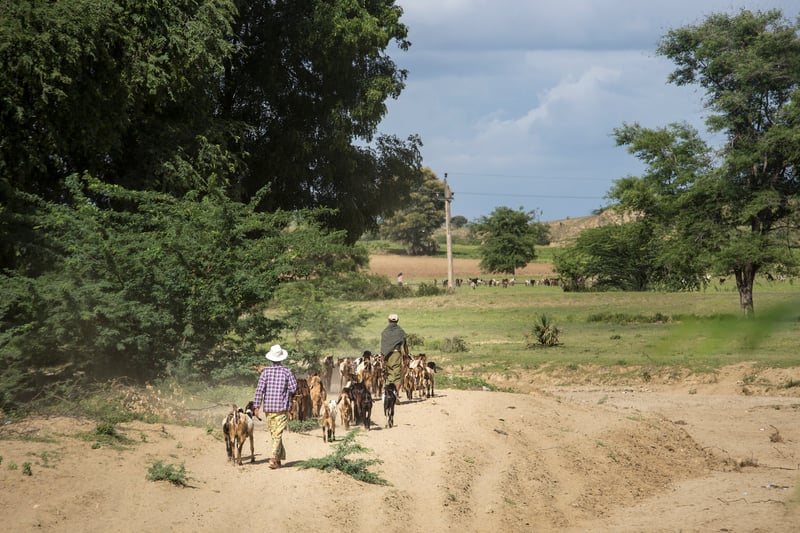
Around the world countless animals are affected during droughts, flooding, earthquakes, volcanic eruptions and hurricanes.
By ensuring that governments, local authorities and animal owners are better prepared for hazards such as these, we can reduce suffering, as well as the impact on people’s livelihoods.
We work with local communities to find sustainable solutions to prevent new, and reduce existing, risks faced by farmers and pet owners. These are as diverse as the contexts and animals themselves: from typhoon resistant animal shelters in the Philippines, to climate change adaptation for cattle farmers in Mexico.
A model of community resilience
In 2012, as part of World Animal Protection’s response to flooding in Assam, India we worked with one village to ensure the community was prepared for future floods (which are annual occurrences). In Seujia Pathar in the district of Dhemaji we undertook training with animal owners on disaster management; supported them in preparing disaster management plans; and helped them build animal shelters with elevated feed bank facilities. These measures were put to the test in the last month, as the district once again faced devastating flooding. However thanks to the preparation and mitigation activities, the village has been better able to cope with the flood and there have been less losses.
Early warning in the Horn of Africa
As I write this blog, my colleagues in Kenya are acting to pre-empt an outbreak of the deadly Rift Valley Fever (RVF), following the early warning of an el Nino in the Greater Horn of Africa. The el Nino is predicted to cause extensive floods and landslides in some regions, as well as droughts in others.
Lessons learned from previous el Ninos singled out RVF as the major disease affecting disaster stricken communities in Kenya. As such, we’re working with the national government, county officials and local partners, to undertake a massive vaccination drive in Baringo County. The drive will see us inoculate an estimated 487,000 animals against RVF, as well as rabies and Pest des Petits Ruminants. Such prevention activities will reduce both animal and human losses in the wake of the disaster.
Key to sustainable development
Over a billion people rely on animals - and 752 million of these are livestock keepers that live on less than $2 a day. We know that the poor are most vulnerable to disasters as they often are highly exposed to hazards, and have less capacity to cope, adapt and recover. Furthermore, many of the countries with the highest densities of poor livestock keepers are also those with high multi-hazard ratings. To be truly sustainable, disaster risk reduction needs to be embedded in development programmes, helping make nations and communities more resilient to disasters. For people like Kyaw Hlaing Myint (pictured above), a farmer in Myanmar, these measures must include animals.
Working behind the scenes
We also work behind the scenes to promote the political will to protect animals. And we have a special reason to celebrate International Day for Disaster Reduction this year: following over two years of lobbying we were able to ensure that animals were included in Sendai Framework for Disaster Risk Reduction: 2015-2030, agreed by members of the United Nations in March.
The inclusion of animal protection highlights the important interdependencies between people and animals. We expect it will lead to the integration of livestock and working animals into regional and national disaster preparation and planning. Such integration would mean that more communities like Seujia Pathar in India are better prepared to care for their animals in the face of a disaster, reducing the suffering animals experience and protecting people’s livelihoods.
Find out more about the work we do to help animals affected by disasters on our animals in disasters page.
